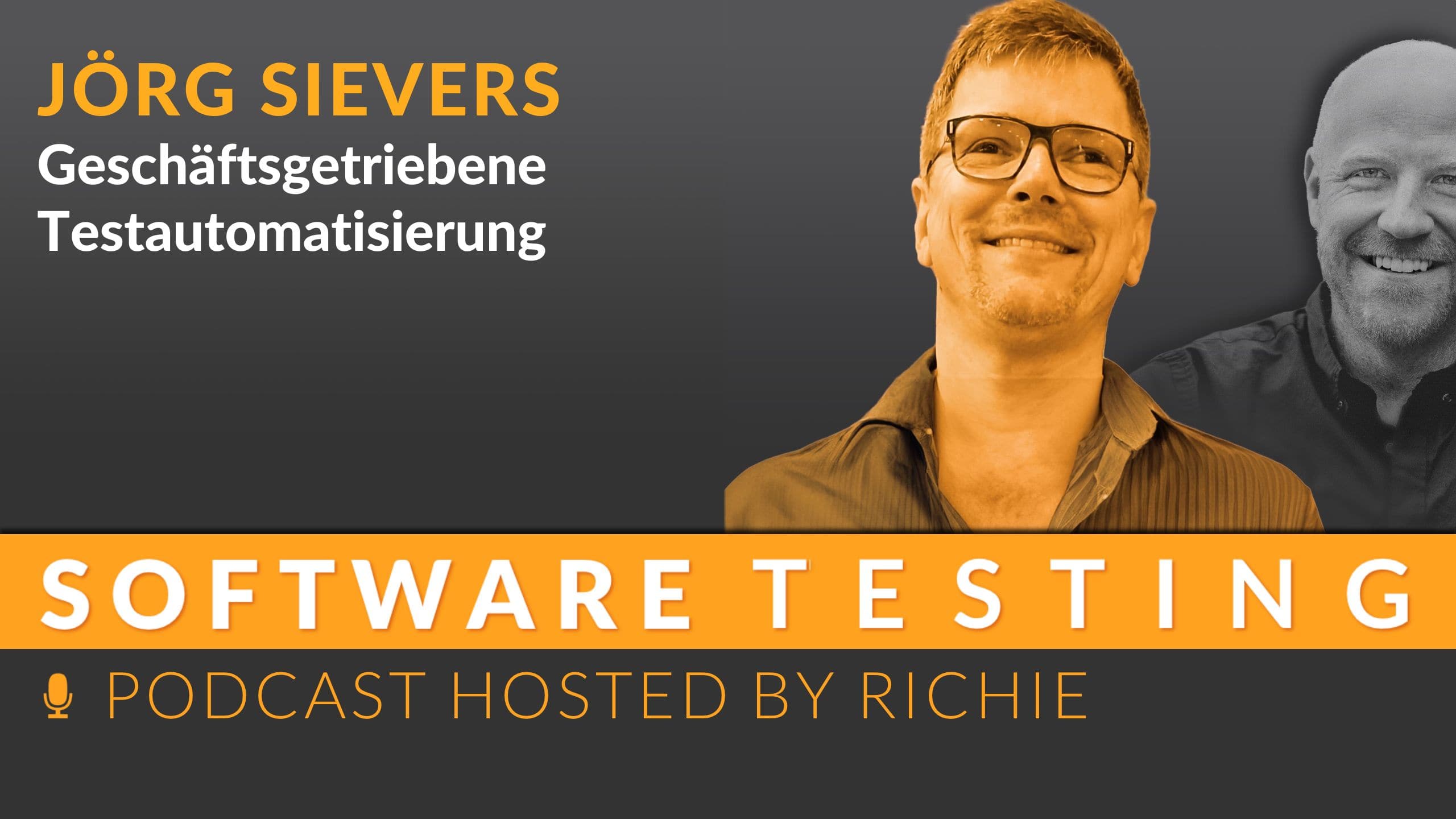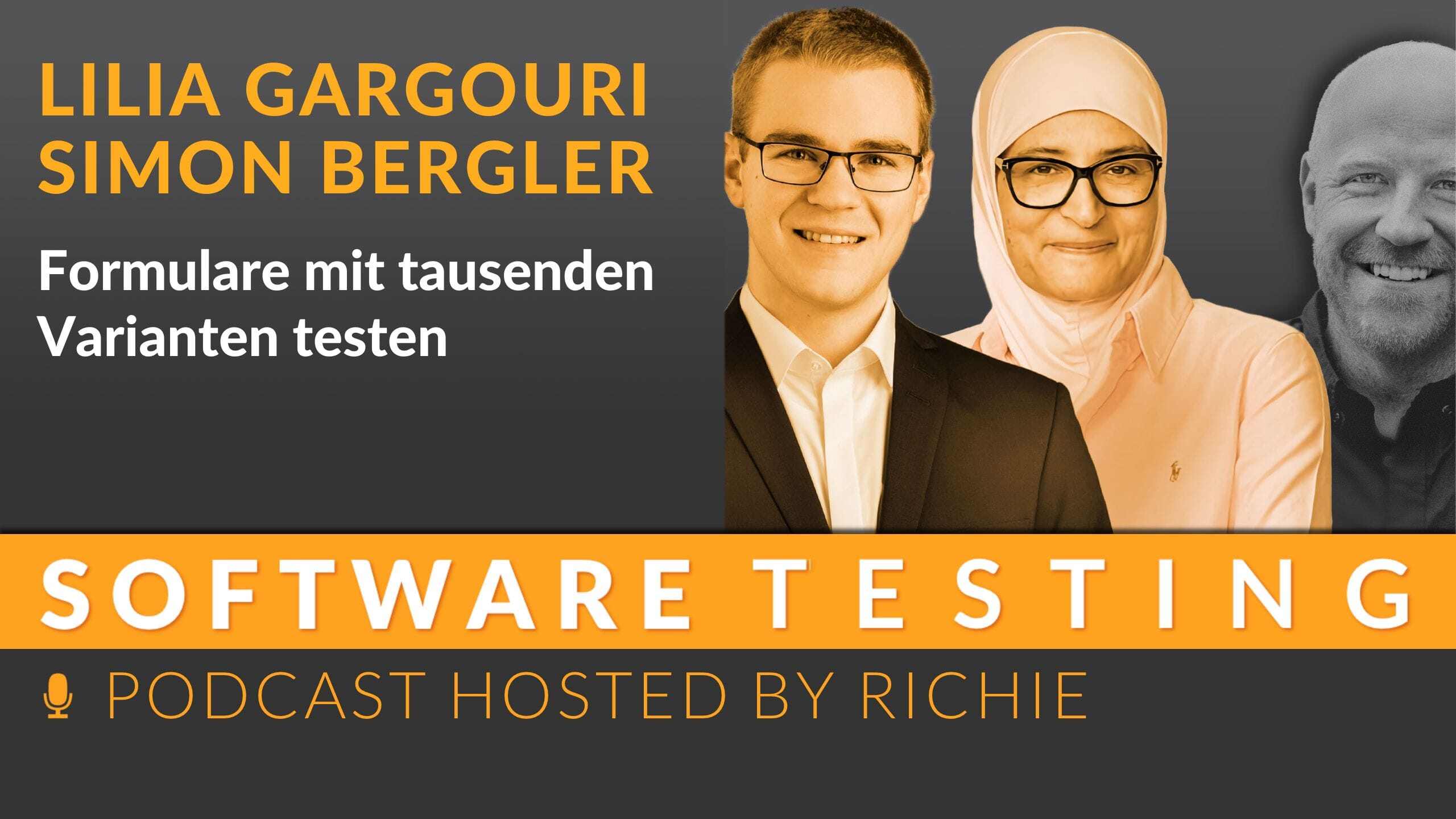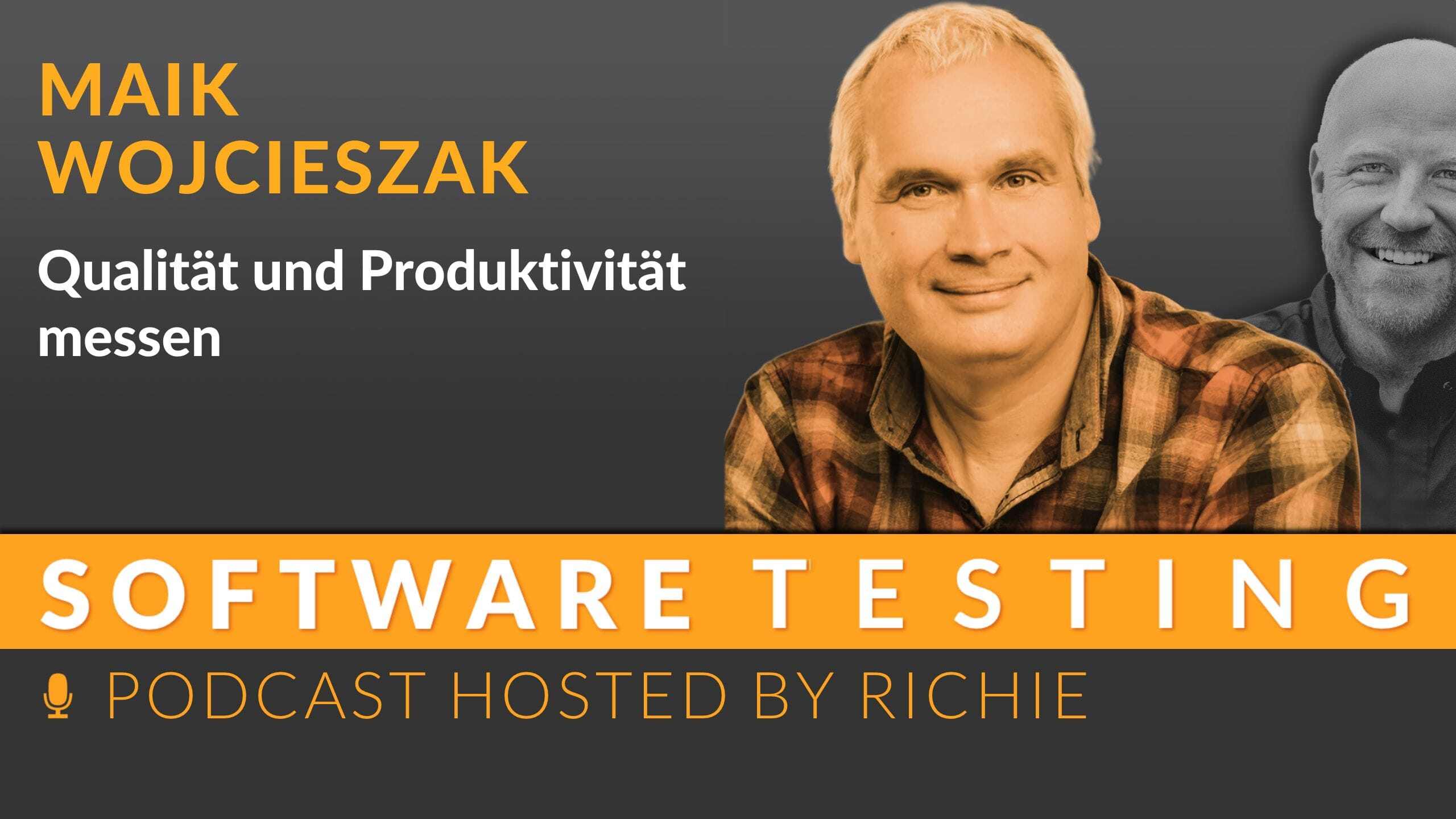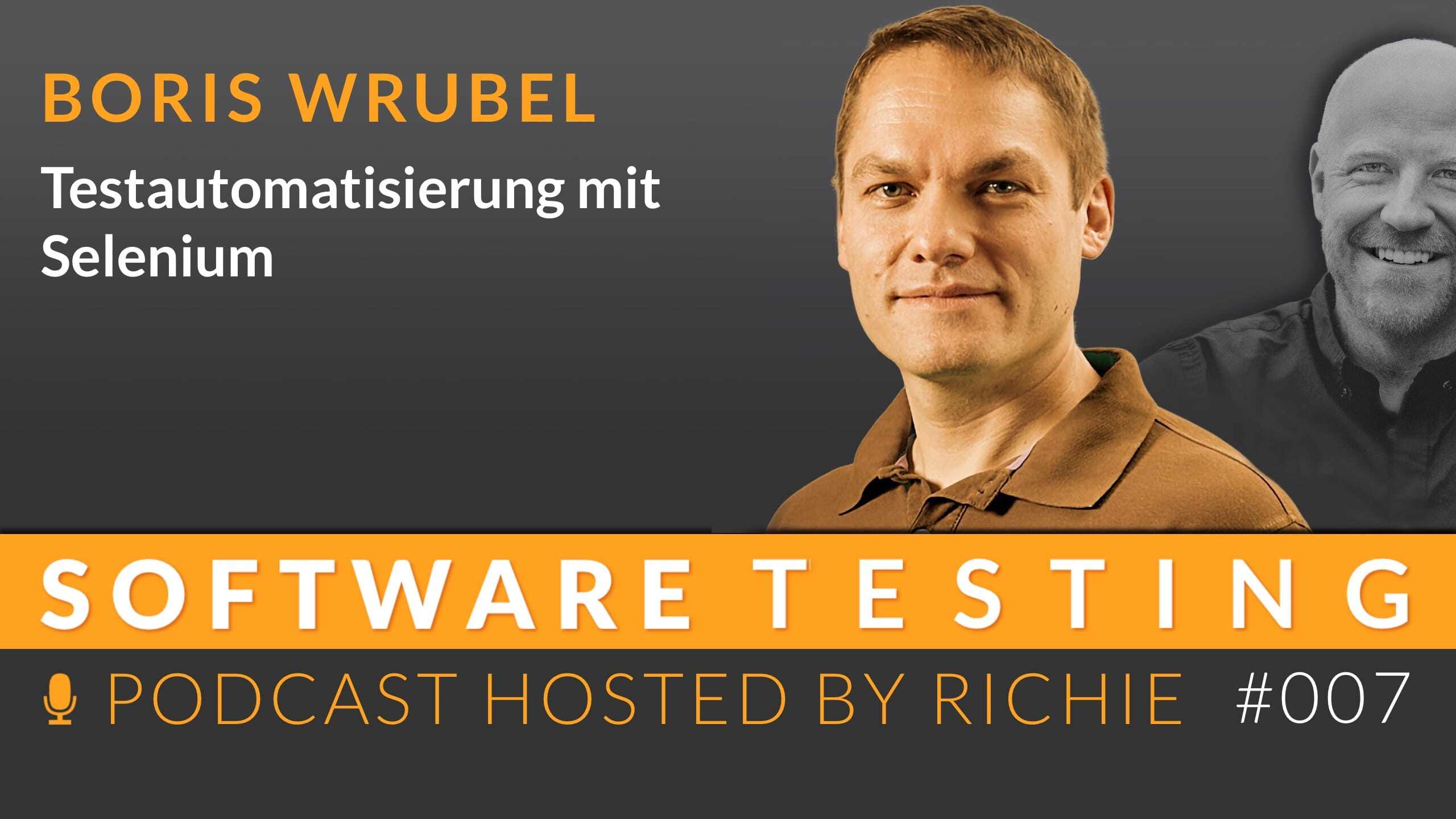Efficient Form Testing
Podcast Episode: Efficient Form Testing In this episode, we discuss the challenges and solutions when testing forms. How can the tester of an immense...

The transformation of traditional test structures in companies is increasingly being shaped by methodically integrated specialist departments. One example shows how employees without an IT background are gradually introduced to test automation - with familiar tools, adapted wording and systematic coaching approaches. The aim is to integrate specialist knowledge directly into quality assurance and to reduce time-consuming manual testing in the long term. The focus is on risk-based and business-driven testing, accompanied by a culture of continuous improvement. This creates processes that not only increase efficiency, but also strengthen the understanding of software quality throughout the company.
In this episode, I talk to Jörg "Jogi" Sievers from Signal Iduna about business-driven test automation. Jogi shows us how specialist departments can be effectively integrated into test automation despite their day-to-day duties. With a lot of pragmatism, a good dose of humor and clever approaches - for example, using familiar metaphors such as "rail replacement traffic" - he manages to make testing more accessible.
"We ask the people who are going to use the tool. That's the only way to create real acceptance." - Jörg Sievers
Jogi has been a specialist in test automation and software quality assurance for over 25 years. Before that, he worked in the food industry for a decade, where his eye for quality was sharpened from the very beginning. In his private life, he specialized in remote data transmission (bulletin board systems (BBS), also known as mailboxes) in the pre-Internet age, until he finally landed in IT. Installations, migrations, support and training for medical practice software, as well as the sale and installation of PCs, NeXT, Sun and Apple computers gave him a broad base of IT knowledge. This was followed by the surface test automation of StarOffice and OpenOffice.org as desktop applications and Sun WebOffice in the web world. He then worked for ten years for a software manufacturer and service provider in the energy industry before joining the SIGNAL IDUNA Group four years ago.
Business-driven test automation is becoming increasingly important in the insurance context. At Signal Iduna, this approach was implemented specifically to meet the special requirements of the industry. Test automation in the insurance environment requires not only technical know-how, but also a deep technical understanding of business processes and regulatory requirements.
Previous automation attempts at Signal Iduna had to contend with considerable challenges. Testing was mainly carried out by teams of developers who often lacked the necessary insurance-specific expertise. This meant that important technical aspects and industry-specific risks were not adequately covered. Purely technical testing reached its limits when the focus was on complex insurance products and regulatory compliance.
The introduction of business-driven test automation eliminated this gap through close collaboration between technicians and business experts. This ensured that automated testers not only checked technical functionalities, but also validated the correct behavior from an insurance business perspective. This was a decisive step towards higher quality and audit-compliant test automation at Signal Iduna.
Compliance with the VAIT (Insurance Supervisory Requirements for IT) is a central challenge for test automation in the insurance industry. Testing under VAIT requires both technical and functional approvals to ensure that systems comply with regulatory requirements.
Technical approvals** are often granted by insurance brokers or experts whose knowledge is essential for a sound assessment.
Technical insurance knowledge is necessary to correctly map the complexity of products and processes and to accurately assess risks.
To ensure audit-compliant documentation, a tool was deliberately chosen that enables Excel-like operation. This form of documentation not only makes it easier to provide evidence to auditors, but also supports the traceability and transparency of all test activities. This approach ensures both technical and professional quality assurance.
The selection process for the test tools was carried out by two bussiness experienced employees who used usability testing as a decisive criterion.
Half-day training sessions were held to clearly define the test objectives and establish a risk-based approach.
Test automation was introduced in line with the adapted Qytera four-pillar strategy. This test automation has now developed from an optional extra to an obligation and significantly increases efficiency in quality assurance.
The organizational structure at Signal Iduna has evolved through an agile transformation since 2019. This includes the integration of business analysts in cross-functional teams to ensure a more holistic approach. In addition, a coaching model has been implemented that provides for weekly team coaching sessions and ensemble testing in the Center of Excellence since September.
The teams are composed in such a way that they include both technicians with automation experience and technical experts. This mix ensures a broad spectrum of expertise and technical competence for the effective implementation of business-driven test automation.
In test automation, Signal Iduna relies on proven principles such as the Triple A principle, which consists of the steps Arrange, Act and Assert. The initial situation is prepared first (Arrange), then the action is executed (Act) and finally the result is appraised (Assert). In addition, the SEV-Frame is used, which follows a structured procedure with the Setup, Execute and Verify phases.
Business-driven test automation is based on a behavior-based approach that is particularly suitable for complex insurance projects. This focus on the expected behavior of the software makes testing more precise and meaningful.
A central component is risk-based training, which teaches practical examples such as equivalence partitioning and boundary value analysis. These trainings support teams in identifying critical scenarios and testing them efficiently, which sustainably increases the quality of automation.
The automation of the customer portal for digital correspondence and product purchases has been running stably for over 3.5 years and shows how sustainable test automation can be implemented.
The optimization of the login behavior in the portal, which improved user-friendliness and security, was essential for the success. The automation enabled a significant reduction in effort, as communication between developers and specialist testers became noticeably more efficient.
The test automation of different system types played a crucial role in this process. The close cooperation between the teams ensured that technical requirements could be precisely translated into automated tests. This not only increased the quality of the software, but also ensured the maintainability of the tests.
Practice has shown that continuous automation and coordinated processes can save resources in the long term - a clear benefit for the entire company.
The business-driven test automation at Signal Iduna includes the combination of two different tools:
Care is taken to ensure that testers use simple programming languages, while developers use JavaScript. This combination improves collaboration between teams and enables efficient implementation of test cases.
The further development of business-driven test automation at Signal Iduna is based on consistent agile adaptation. A central focus is on synthetic test data generation in order to make quality assurance even more efficient and flexible. By generating artificial but realistic data, tests can be carried out independently of real production data, which improves both data protection aspects and the availability of test data.
The motivation to share successful experiences from previous projects serves as an important incentive for continuous improvement. This openness promotes increased acceptance of automation solutions in the teams and supports the establishment of a sustainable test strategy. The combination of agile working methods and innovative techniques such as synthetic data generation strengthens the role of business-driven test automation as an integral part of modern software development in the insurance environment.
Business-driven test automation at Signal Iduna means that test automation is closely aligned with business requirements and processes. It combines business expertise and technical automation to ensure high-quality testing that is specifically tailored to the insurance industry.
Under VAIT (Insurance Supervisory Requirements for IT), both technical and functional approvals are mandatory. Insurance expertise plays a central role, especially in the selection of audit-compliant tools with Excel-like documentation to ensure audit documentation and fulfill compliance requirements.
The tool selection was made by two business experienced employees based on usability testing, with a focus on user-friendliness. Half-day training sessions clarified test objectives and the risk-based approach. The introduction was based on the Qytera four-pillar strategy to ensure a structured implementation of test automation.
Since 2019, an agile transformation has been taking place with cross-functional teams in which business analysts are integrated. A Center of Excellence provides support with a coaching model including weekly team coaching sessions and ensemble testing. The teams consist of technicians with automation experience and technical experts to ensure close integration of business and technology.
Signal Iduna uses the Triple A principle (Arrange, Act, Assert) and the Rail Replacement Service (Setup, Execute, Verify). The business-driven test automation follows a behavior-based approach for complex projects. In addition, practice-oriented risk-based training is carried out, e.g. on equivalence partitioning and boundary value analysis.
Further development focuses on agile working methods with a particular focus on the synthetic generation of test data. The aim is to disseminate successful experiences, promote continuous improvements and further increase the acceptance of automation in the company.

Podcast Episode: Efficient Form Testing In this episode, we discuss the challenges and solutions when testing forms. How can the tester of an immense...

Podcast Episode: Measuring Quality This time it's about the importance of metrics in software development and how they can help replace opinions with...

Podcast Episode: Test automation with Selenium Boris is a test automation specialist. In this interview, we talk about the automation framework...